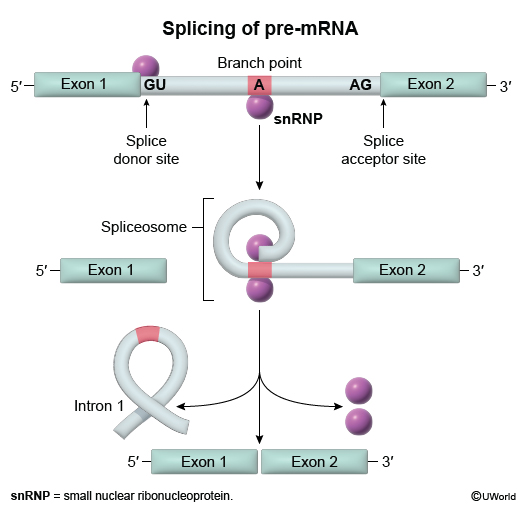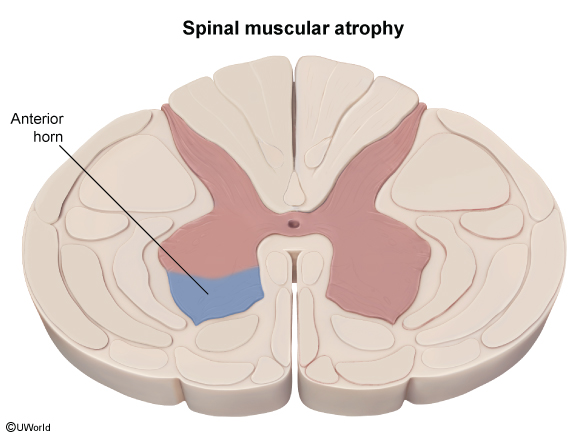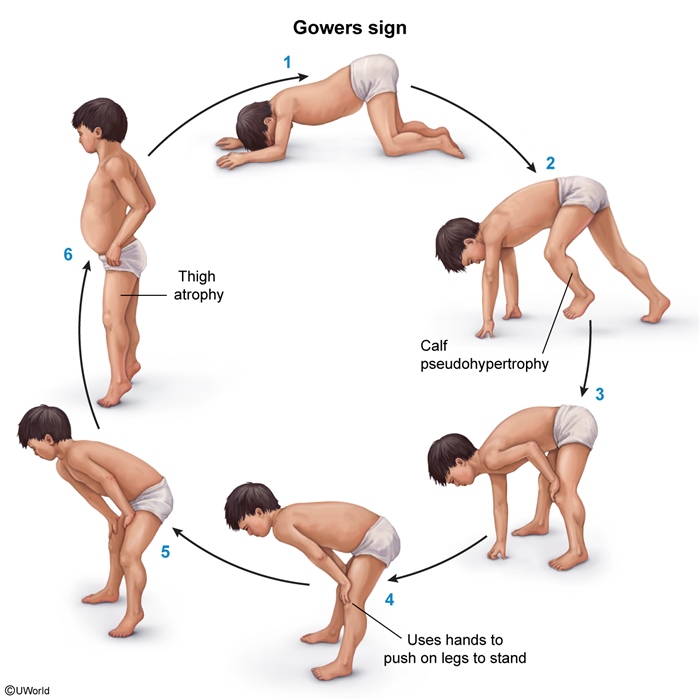Spinal Muscle Atrophy (SMA)
Article Sections
Introduction
Spinal muscular atrophy (SMA) is a genetic disorder characterized by progressive degeneration of lower motor neurons (LMNs) in the anterior horn of the spinal cord, leading to muscle weakness and atrophy. SMA is autosomal recessive and has a spectrum of severity, ranging from severe infantile-onset disease to milder adolescent-onset forms.
Pathophysiology
SMA occurs most commonly due to a homozygous deletion of exon 7 within the SMN1 gene; this results in the loss of survival motor neuron (SMN) protein. This protein is involved in assembly of small nuclear ribonucleoproteins (snRNPs) (non-coding RNAs) in lower motor neurons. snRNPs are a parts of the spliceosome, which removes introns from pre-mRNA during processing within the nucleus (Figure 1). Defective snRNP assembly results in impaired spliceosome function and causes
Continue Learning with UWorld
Get the full Spinal Muscle Atrophy (SMA) article plus rich visuals, real-world cases, and in-depth insights from medical experts, all available through the UWorld Medical Library.
Figures


